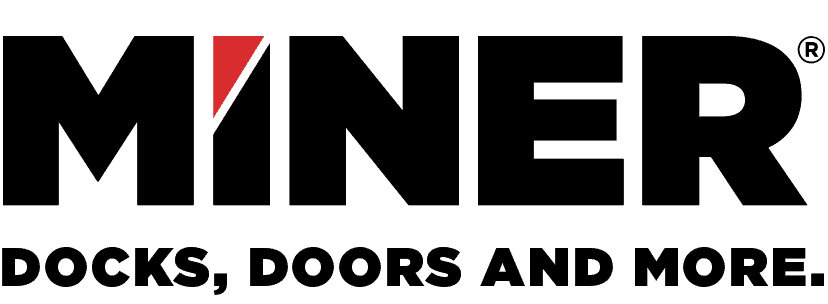When building or renovating the loading dock area at your facility, every decision can affect your efficiency and safety. This includes determining the right dock height, as well as the dimensions of your loading dock doors and your choice of specialized loading dock equipment, such as loading dock leveler systems, dock bumpers and truck restraint hardware.
Standard loading dock height falls between 44 and 55 inches. It’s up to you and your facility service partners to determine where within that range you should build, or whether it’s better to go with a custom height, tailoring your loading dock for a specific usage. Optimal dock setup is worth the time and attention to get right.
Optimizing Loading Dock Performance: 5 Factors To Consider
Achieving an ideal layout for your loading dock means thinking about the way your people will interact with the dock and going backward from there. The following are five considerations that add up to an optimal material handling experience on the dock.
1. Location, Layout, Capacity, Scalability
All dock design decisions start by setting your intentions for the space. What type of cargo do you expect to pass through the dock? This will affect how much weight the platform will have to support. Do you expect to expand to more bays in the future? If so, you’ll need to leave space. How much room will you set aside for pedestrian walkways, and how many vehicles do you want to accommodate?
By the time you break ground on a loading dock construction process, you should have a clear idea of how you’ll use the space. Otherwise, you may have to engage in costly revisions afterward.
2. Dock Design and Dimensions
Picking the right loading dock height means matching the average truck bed height as closely as possible. This tends to lead to platforms that conform to standard loading dock height, in the 44 to 48 inch range. It’s worth noting that refrigerated trucks are usually taller than their standard trailer counterparts.
Loading and unloading trucks efficiently through dock levelers and dock plates is simplest when the height difference between the average truck bed height and your dock is as small as possible. Minimizing the angle between the truck bed and the surface of the dock provides a smoother, and thus safer, experience for dock personnel.
Follow this checklist to make sure your dock area is safe.
3. Safety Features, Compliance and Regulations
Some of your loading dock designs will depend on Occupational Safety and Health Administration (OSHA) regulations. It’s important to remember that these OSHA rules are starting points, rather than endings, and it’s a good practice to be safer than what’s required.
Points to consider include segregating vehicle and foot traffic, as well as installing guardrails and other fall prevention methods at the dock. The national requirement is that platforms 4 feet or higher need an edge guarding system, so 44-inch docks are shorter. Even when technically exempt, however, fall prevention is a best practice.
See which safety hazards are most common on the dock.
4. Environmental Considerations
Loading dock construction and continued operation can affect the environment around your facility. The process of designing your optimal loading dock area can incorporate environmental factors alongside employee efficiency and safety aids.
Environmental considerations go beyond the obvious. Everything from sanitation and pest control to energy saving and temperature control is an overall piece of the puzzle regarding your facility’s impact, alongside potential pollution during the dock construction process.
5. Special Requirements
Some expected dock usage scenarios may require the use of non-standard material handling equipment or the construction of structures in custom sizes or configurations. These use cases include:
- Cold chain operations: Strict temperature control requirements in industries such as food production and pharmaceuticals come with specific needs, such as dock height optimized for refrigerated trucks. Extra material needs may include loading dock seals and shelters, as well as high-speed door systems.
- Oversized vehicles: The scale of the trailers and trucks you expect to work with can shape loading dock design in terms of the height of the platform, the scale of loading dock door frames or the width of vehicle bays.
Considering these factors as you build or renovate your loading dock can lead to a safer, more efficient loading and unloading experience, with less need for adjustment later.
Watch our webinar on safety in your facility.
Work With a Loading Dock Expert
Keeping up your dock performance over time starts with design and installation, and continues with proactive maintenance and repairs. There’s value in finding the right partner organization to handle all these responsibilities for all your warehouses and distribution centers.
With our national reach and facility expertise, MINER can help your organization optimize loading dock performance, from design to installation, proactive maintenance and emergency repair services. Our team of factory-trained experts can revolutionize loading dock performance and material handling equipment upkeep.
Read our eBook to hear more insights from our loading dock experts, or check out our loading dock service and loading dock repair offerings.
